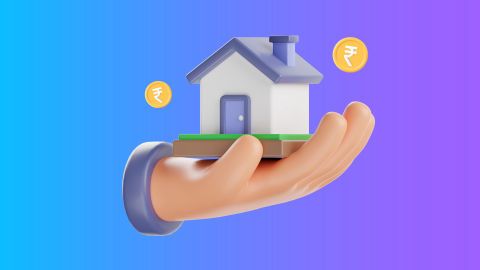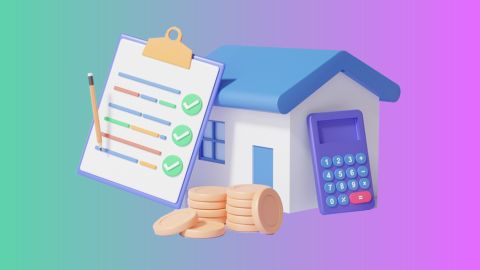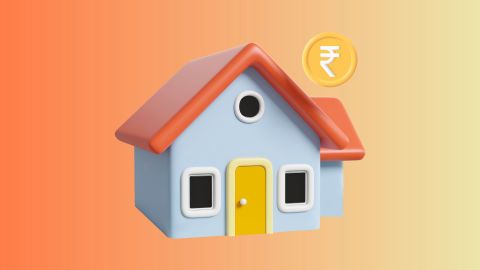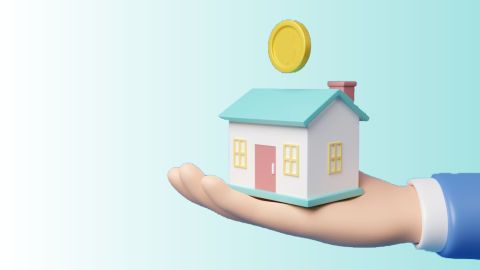When you are looking to buy a home or refinance your existing property, understanding your mortgage loan rate is crucial. It plays a major role in deciding how much you will pay each month and over the life of the loan. One of the best ways to get an idea of what your mortgage rate might be is by using a mortgage loan rate estimator. It is an easy, free tool that helps you estimate your loan rate based on your financial profile. If you are considering financing options like loan against property, it is important to use an estimator to get an idea of how different loan amounts, terms, and interest rates might work for you.
What is a mortgage loan rate estimator?
A mortgage loan rate estimator is an online tool designed to help prospective homeowners or borrowers quickly estimate the interest rate they might qualify for on a mortgage loan. This tool takes into account various personal financial factors, such as income, credit score, loan amount, and the type of mortgage you are interested in, to give you an estimated interest rate.
It simplifies the mortgage process by providing an estimate upfront, so you do not have to waste time contacting banks or lenders for rate quotes. The rate estimator also helps you make more informed decisions when choosing a mortgage lender or exploring options like a loan against property. For those seeking a trusted loan against property provider, Bajaj Finance offers attractive terms and a smooth borrowing experience. Apply for loan against property today and get the best deal on your property.
Types of mortgage loans available
Here is a quick overview of the most common mortgage loans, with example estimates:
Type of mortgage |
Typical rate estimate |
Loan term |
Example EMI (loan amount ₹50 lakh) |
Fixed-rate mortgage |
7.5% |
20 years |
Rs. 39,725 |
Variable-rate mortgage |
6.9% (variable) |
20 years |
Rs. 38,682 |
Loan against property |
8.5% |
10 years |
Rs. 63,437 |
How does a mortgage loan rate estimator work?
The mortgage loan rate estimator works by using basic information to generate an estimated interest rate. Most estimators ask for the following details:
Loan amount: The amount of money you plan to borrow.
Loan term: The number of years you will take to repay the loan.
Credit score: A numeric representation of your creditworthiness.
Property location: Some mortgage rates may vary depending on the region or country.
Income and debt: A snapshot of your financial health to assess your ability to repay the loan.
Once you input these details, the estimator uses algorithms to match you with the most suitable mortgage rate based on current market conditions, your financial profile, and the specifics of your loan. If you are considering options like loan against property, this tool will help you understand the expected EMI (equated monthly instalments) and interest rate based on the property’s value and your repayment capability.
Want to know about mortgage loan eligibility? Get clear on how it works and quickly check the eligibility criteria.
Key factors that influence mortgage loan rates
Several factors determine the interest rate you will be offered when applying for a mortgage. Some of the key ones include:
Credit score: Higher credit scores typically result in lower rates.
Loan amount: Larger loan amounts may come with higher interest rates.
Down payment: A larger down payment can help reduce your interest rate.
Loan term: Shorter-term loans generally have lower rates.
Current market conditions: Interest rates fluctuate based on economic factors.
Debt-to-income ratio: A lower ratio often results in a better rate.
Type of mortgage: Government-backed loans may have lower rates compared to conventional loans.
How to use mortgage loan rate estimator?
Using a mortgage loan rate estimator is simple and efficient for planning your finances. Follow these steps:
- Enter loan details: Input the desired loan amount, loan tenure, and property value.
- Select interest rate type: Choose between fixed or floating rates, as applicable.
- Provide additional information: Some estimators may ask for your credit score, monthly income, or existing debts.
- Calculate: Click on "Calculate" to view estimated interest rates, monthly EMIs, and total repayment.
- Compare rates: Use the results to compare rates from different lenders.
Step-by-step guide to using a mortgage loan rate estimator
Using a mortgage loan rate estimator is simple and can be done in a few easy steps:
Gather your information: Have details like your desired loan amount, income, credit score, and any down payment ready.
Choose your loan type: Select the type of loan that you are interested in, such as a traditional mortgage loan or a loan against property.
Input the data: Fill in the required fields such as your loan term, credit score, and property value.
Get your estimate: Click on “get estimate” or a similar button, and the tool will generate your estimated loan rate.
Review the results: Evaluate the estimated EMI, loan term, and rate options. Use the estimator’s suggestions to make informed decisions.
Understanding different rate types
When you apply for a mortgage loan, you will encounter two main types of interest rates: Fixed and variable.
Fixed rate: Your interest rate stays the same throughout the life of the loan. This can be beneficial if you want predictable payments and stability.
Variable rate: Your interest rate can change periodically based on market conditions. While this might start lower than a fixed rate, it can fluctuate, making your payments less predictable.
How mortgage terms affect your loan rate?
The term of your mortgage—the number of years you agree to repay the loan—can have a large impact on the interest rate and your monthly payments:
Short-term loans: Typically offer lower rates but higher monthly payments.
Long-term loans: Usually come with higher rates but lower monthly payments over a longer period.
Choosing the right term can help you balance your monthly budget and overall loan costs.
Advanced estimator features
Many advanced mortgage loan rate estimators allow you to input additional details, such as:
Down payment: A larger down payment may lower your interest rate.
Property taxes: Some estimators calculate property tax costs into your overall monthly payment.
Homeowners insurance: These costs can also be factored into the estimate.
Benefits of using a mortgage loan rate estimator
Here are some advantages of using a mortgage loan rate estimator:
Saves time: You get an immediate estimate without the need to contact multiple lenders.
Helps with budgeting: Gives you a clear idea of what your monthly payments could be.
Informed decisions: Helps you compare rates and terms from different lenders, including a loan against property option. For example, using a loan against property EMI calculator can give you an accurate estimate of your monthly payments based on the value of your property and the loan amount.
No commitment: You can estimate rates without being locked into any lender.
Conclusion
Using a mortgage loan rate estimator is a smart and efficient way to understand your potential loan options before committing. Whether you are buying your first home or considering loan against property through Bajaj Finance, this tool can help you explore different rates, terms, and repayment scenarios. By knowing your estimated rates, you will be in a better position to negotiate, choose the right lender, and make confident decisions about your financial future.




